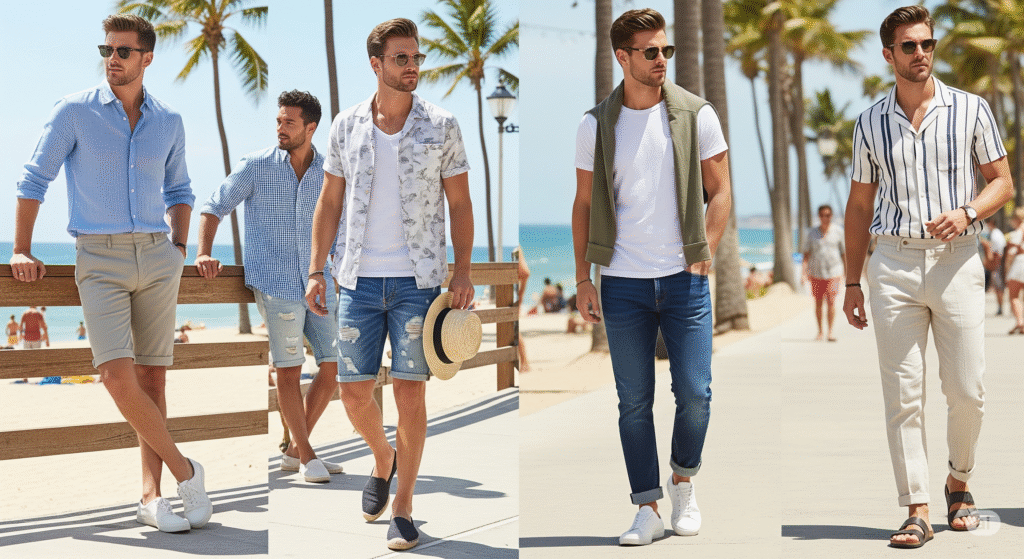It’s a paradox as old as fashion itself: you stand in front of a closet overflowing with clothes, and yet you feel like you have nothing to wear. This isn’t just a frustrating morning ritual; it’s a symptom of a wardrobe that’s no longer working for you. You have quantity, but you lack cohesion and purpose. The solution isn’t to buy more clothes, but to strategically edit what you already have and understand why you’re buying things in the first place. This guide will walk you through a simple, five-step cure to transform your full closet from a source of stress into a tool for effortless style.
The Paradox: Why More Clothes Can Be a Problem
The average person only wears about 20% of the clothes they own. The other 80% sit untouched, creating visual clutter and making it difficult to see what you actually have. The more choices you have, the harder it is to make a decision. This phenomenon, known as “choice paralysis,” is why a perfectly curated capsule wardrobe with just a few versatile pieces can feel more liberating than a packed closet. Your goal is to move from a collection of random clothes to a thoughtful, functional wardrobe.
The 5-Step Cure
Step 1: The Purge – The “Hanger Trick”
The first step is the hardest: deciding what to keep and what to let go. Instead of trying on everything, use the “hanger trick” for a quick, effective purge.
- How to do it: Turn all the hangers in your closet so the hook faces out. When you wear an item, turn the hanger around so the hook faces in. After six months or a year, any item on a hanger that is still facing out is an item you never wore. These are the clothes you should consider donating, selling, or repurposing. This method provides an objective, data-driven look at what you actually wear and what’s just taking up space.
Step 2: Identify the Gaps – The “Jeans Problem”
Once you’ve purged, you’ll start to see your wardrobe for what it really is. This is where you identify the “gaps.” A common example is having ten different tops but only one pair of jeans that fits and goes with everything. You have plenty of options, but no way to make them into outfits.
- How to do it: Take note of what you wore most often in the last few months. What are the key pieces that make your outfits work? Are you always reaching for the same black jeans, but you have no shoes to go with them? Do you have dozens of printed tops but no simple, solid-colored bottoms? List these foundational pieces and identify where your closet is lacking.
Step 3: Define Your Style – Are You Casual, Classic, or Trendy?
Before you buy a single new item, you need to understand your personal style. Your style is a reflection of your lifestyle. Are you a professional who needs polished, structured pieces? A creative who thrives in bold colors and unique silhouettes? Or do you value comfort and function above all else?
- How to do it: Create a mood board on Pinterest or in a notebook. Look for outfits that you are consistently drawn to. Do you see a lot of clean lines and neutral colors? That might be a classic style. Are you drawn to simple, minimalist looks? That might be a casual style. Are you drawn to bold patterns and vibrant colors? That might be a trendy style. Understanding your style will prevent you from making impulse purchases that don’t fit with the rest of your wardrobe.
Step 4: Create a Smart Shopping List
Now that you know what you’re missing and what your style is, you can create a smart shopping list. This list will prevent you from buying random items and will guide you to make intentional purchases that will fill the gaps in your wardrobe.
- How to do it: Using your list from Step 2, prioritize the items you need most. For example, if you’re lacking a good pair of jeans, that should be at the top of your list. Don’t just list “jeans”; be specific. For example, list “dark-wash, mid-rise, slim-fit jeans.” This level of detail will make your shopping trip more efficient and successful.
Step 5: The Organization – See What You Have
The final step is to organize your closet so you can see everything you own. A well-organized closet makes it easier to create outfits and find what you’re looking for, eliminating the feeling that you have “nothing to wear.”
- How to do it: Arrange your clothes by type (e.g., all your t-shirts together, all your jeans together) and then by color. Use slim, non-slip hangers to maximize space. Fold your jeans and sweaters and store them on shelves or in drawers. Store your shoes in an organized rack so you can see them all.
By taking these five simple steps, you can move from a state of frustration to one of control. Your closet will become a curated collection of pieces that you actually wear and love, making your morning routine a breeze.

